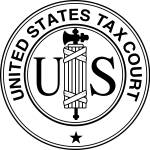 On December 15, 2011, Western Union announced that it entered into an agreement with the Internal Revenue Service to settle a long standing transfer pricing dispute with its former parent company, First Data Corporation. According to documents filed with the Securities Exchange Commission, Western Union and First Data agreed to a total of $1.18 billion in transfer pricing related adjustments. The total adjustment included the recognition of $885 million of additional income in 2003 related to First Data’s restructuring plan, which transferred certain intangible assets out of the United States, and additional adjustments between 2004 and 2011 to reach the $1.18 billion total. Penalties were dropped.
On December 15, 2011, Western Union announced that it entered into an agreement with the Internal Revenue Service to settle a long standing transfer pricing dispute with its former parent company, First Data Corporation. According to documents filed with the Securities Exchange Commission, Western Union and First Data agreed to a total of $1.18 billion in transfer pricing related adjustments. The total adjustment included the recognition of $885 million of additional income in 2003 related to First Data’s restructuring plan, which transferred certain intangible assets out of the United States, and additional adjustments between 2004 and 2011 to reach the $1.18 billion total. Penalties were dropped.
Western Union and First Data will make approximately $470 million in payments to satisfy the adjustments under the settlement agreement. Western Union also announced that it will eliminate its tax reserve related to the case and should record a one-time tax benefit of approximately $200 million in 2011.
In March 2009, First Data Corporation filed a petition in the United States Tax Court disputing a notice of deficiency alleging more than $2 billion of transfer pricing related adjustments and penalties. The matter was notable not only for the size of the proposed adjustment but also for several other procedural and tactical moves that took place over the course of the dispute.
While undergoing an examination of its 2003 reorganization and the transfer pricing planning that accompanied that transaction, First Data also was subject to a John Doe Summons in which the IRS sought the names of merchants who transferred money outside the United States using First Data’s services (more particularly Western Union’s services). First Data resisted the Summons but a U.S. District Court judge in Denver ruled that First Data had to turn over the requested information.
Shortly before First Data’s petition was filed in the Tax Court, the Chief Counsel of the IRS issued a Technical Advice Memorandum (TAM), TAM 200907024, which held that the transfer of a portion of a taxpayer’s global delivery business overseas was fully attributable to identifiable intangible assets under section 936(h)(3)(b) therefore gave rise to a deemed royalty under section 367(d). The facts of the TAM were distinctly similar to those of the First Data case and were widely believed be drawn from the First Data examination. Some speculated, appropriately so, that the TAM was part of the IRS’s larger litigation strategy.



